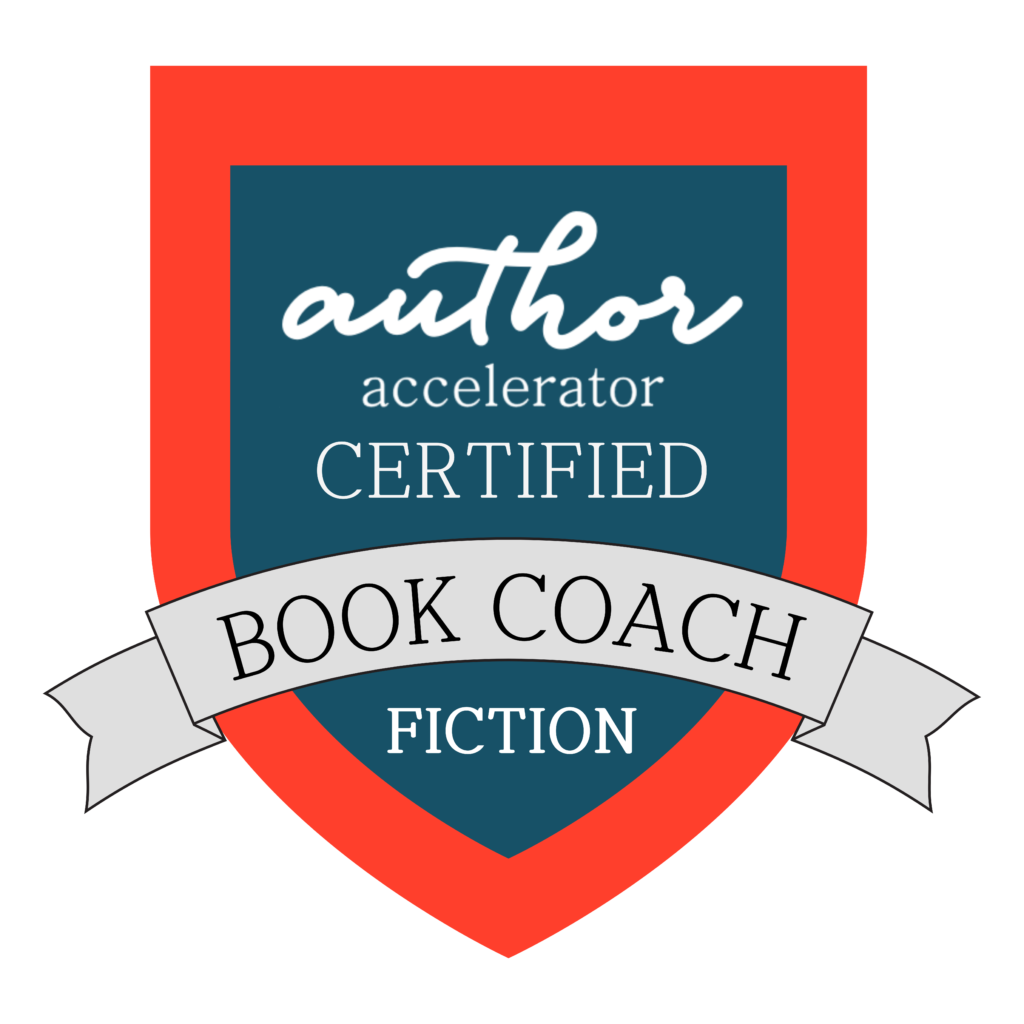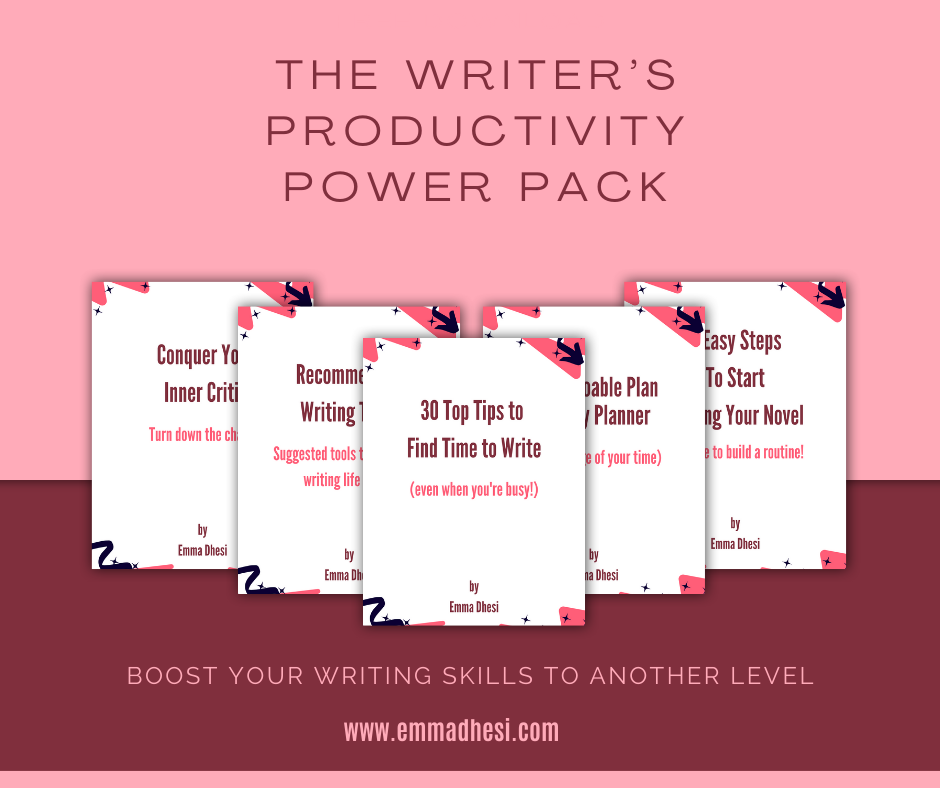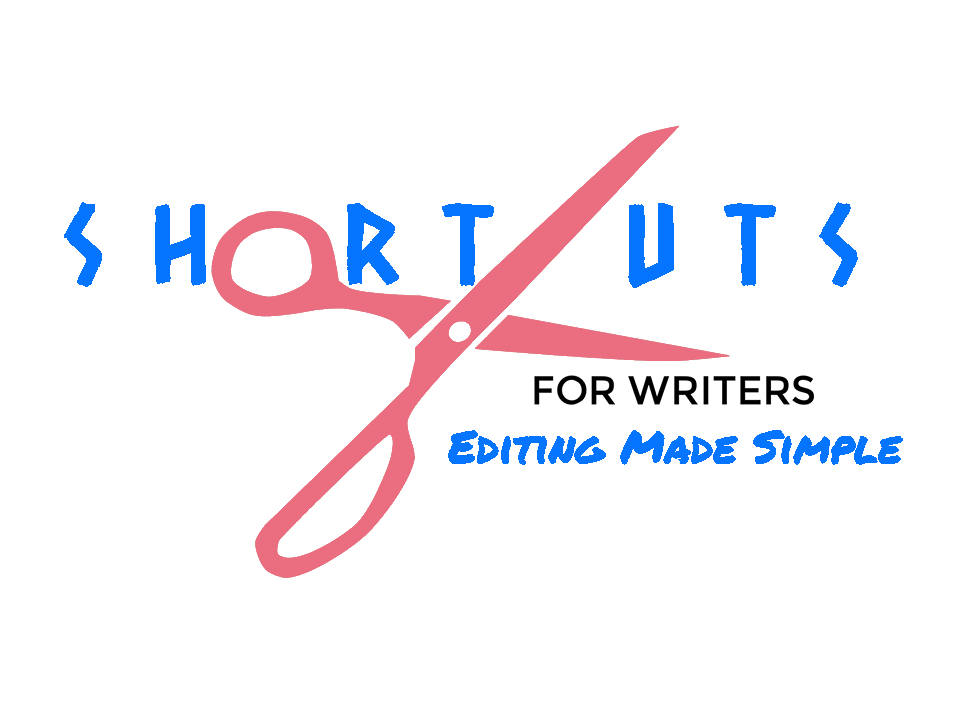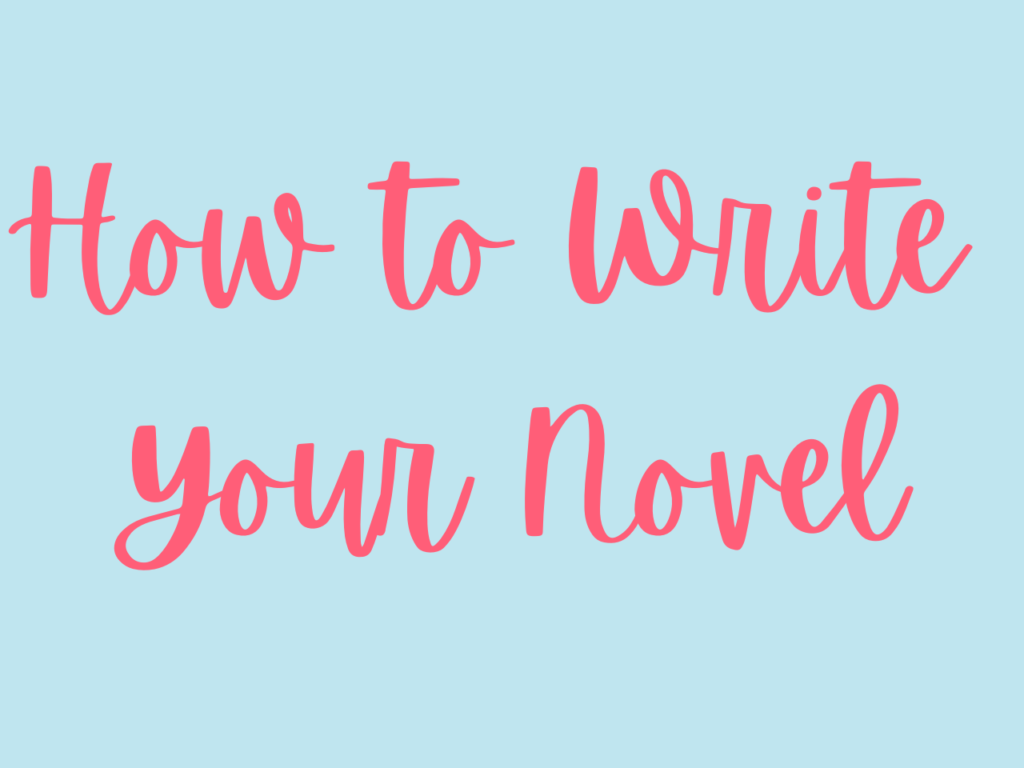This is the second in a three-part miniseries on story structure.
What is story structure anyway?
As a reminder, story structure is the framework upon which you hang your novel. Structure gives your story backbone. It’s the set of rules upon which to build your story so it resonates with readers, drawing them in and holding their attention until the end.
Last week we looked at the oldest of story structures, which is the 3 act structure. It is tried and tested, a nice simple structure and the one I teach my students.
But today we will look at the second of three story structures, The Hero’s Journey.
Story Structure 2 - The Hero's Journey
From time to time, I link to products or services I love using with affiliate links. This means that I may receive a small percentage or fee for referring you to any product you may purchase from one of those sites. It does not cost you anything. These small fees help sustain my small business. I truly appreciate your support.
The Hero’s Journey
There are a few variations on The Hero’s Journey, but I will look at Joseph Campbell’s version, which comprises 12 steps.
This is probably the second most commonly used structure and a famous example is The Hobbit by JRR Tolkien.
That’s the example story I will use because most people know the story. Even if you haven’t read the book, you’ve most likely have seen the movies.
A big circle
It is common to think about The Hero’s Journey as a circle. Your hero starts at the top, in their own world. They are pushed round into an unknown world, or a special world, where they discover they are capable of more than they thought.
They undergo an internal transformation and return up to their old world a new and better person.
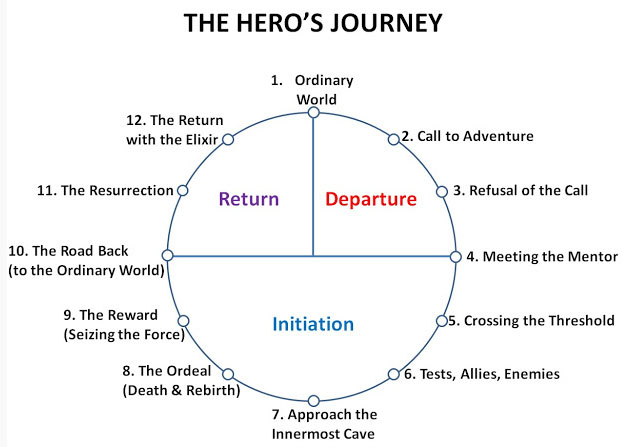
There are 12 steps to The Hero’s Journey:
Step 1 – The ordinary world
In this step your hero is perfectly content in their own world. They think they’ve got, if not everything, most of what they want and need.
They don’t want to go on any adventures that will take them away from what is familiar and comforting. Bilbo Baggins is a perfect example. He doesn’t want to leave the Shire.
Step 2 – Call to adventure
But life is never that good and before they know it, you call your hero to action. At first they refuse the calling. They want to stay where they are, thank you very much.
Bilbo is invited to join the Dwarves as their Burglar’.
Step 3 – Refusal of the call
Bilbo says no thank you, I’m only a Hobbit, I don’t have what it takes to carry out such an arduous task.
Your hero will say the same thing. Even it’s not as dangerous as heading out to face a dragon it will be something they find hugely challenging and don’t want to to.
Step 4 – Meeting the mentor
In this step a third party appears and encourages, or pushes, your hero to accept that call to action. Persuaded, they somewhat reluctantly begin their journey.
Gandalf is the one who persuades Bilbo to leave the Shire.
Step 5 – Crossing the first threshold
This is when your hero departs the old world, steps across the threshold and enters the unknown.
Despite his better judgement, Bilbo follows the Dwarves on their adventure.
Step 6 – Trials and tribulations
The sixth step in your hero’s journey is encountering and overcoming many difficult trials and tribulations.
These challenges push your hero to the limits. They are forced to do things they didn’t think they were capable of. Their strength and courage is tested to the max.
Bilbo encounters Goblins, spiders, trolls and of course, Gollum.
Throughout this period your hero re-encounters the person who pushed them into accepting the journey in first place. They also encounter a number of helpers along the way.
These help helpers aid your hero to overcome the various challenges until they hit a point of revelation. During this revelation they discover things about themselves they didn’t know were possible and they shift from being the person they were before, to the person they were going to be.
Think Elves, Eagles and Beorn.

Step 7 – The inmost cave
Here your hero comes face-to-face with one of their biggest fears and is put to their biggest test yet.
For Bilbo this is when he encounters the dragon. Let’s face it, that would be a tough day for anyone!
Step 8 – Ordeal
Crisis point. This is when your hero is at their lowest or weakest ebb and doesn’t know whether they can carry on. At the last moment, they regroup, pull themselves together and are, essentially, reborn.
In our Hobbit example, there is a battle at the bottom of the Lonely Mountain between five warring actions. Bilbo faces possible death.
Step 9 – The reward
Your hero can sit back and enjoy the fruits of their labour. All that adventure, terror and near-death was worth it in the end.
Bilbo fought well and is rewarded with a dagger of his own. He is also allowed to keep the gold ring.
Step 10 – The road back
Depending on your story, you can add in a few more challenges and inner demons to overcome before the story is finished.
In our example Bilbo heads back to the Shire, via Beorn’s home, with Gandalf.
This step is also known as Treasure. It is when the hero wins something. It could be a physical treasure, or it could be status or even a love interest.
Step 11 – Resurrection/Rebirth
As the title suggests, your hero recovers with a new sense of identity, or, if they’ve faced a few more challenges on the road back, even from near-death.
In The Hobbit, Bilbo recovers from his adventures with a new sense of himself.
Step 12 – Return with the elixir
Your hero returns home with a whole new vision of themselves and their world.
Bilbo returns to the Shire a different Hobbit to the one who left. He’s no longer scared of the outside world outside. Plus, he has a dagger and a ring!
Conclusion
You have probably spotted this plot structure in many movies. Think of Luke Skywalker in Star Wars, or even Katniss Everdeen in The Hunger Games (which is also written in a clear three at structure).
Even Harry Potter, young though he is, is called on The Hero’s Journey!
Next week we will look at the third and final structure which is there Seven Point Story Structure
If this article was useful, you’ll love:
If you’ve been working on your novel for years (perhaps even decades) the maybe it's time to consider working with a coach.
If you have multiple versions of your novel and you don’t know which works best, are scared nobody will like your book and don't feel like a 'real' writer, then my guess is coaching is the right next step for you.
Find out more and sign up for your free Clarity Call here: https://emmadhesi.com/personal-coaching/

Emma Dhesi writes women’s fiction. She began writing seriously while a stay at home mum with 3 pre-school children.
By changing her mindset, being consistent and developing confidence, Emma has gone from having a collection of handwritten notes to a fully written, edited and published novel.
Having experienced first-hand how writing changes lives, Emma now helps beginner writers find the time and confidence to write their first novel.

